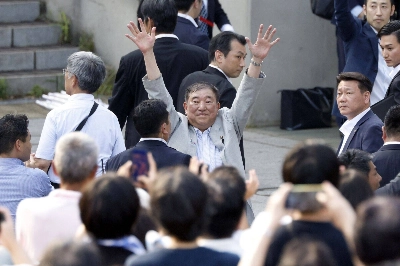Billed as an “adult romance” in Japan, where it was a runaway bestseller when it came out in 2016, Keiichiro Hirano’s “At the End of the Matinee” can’t really be described as a romance novel in the typical sense for English readers.
Sure, the star-crossed protagonists play out the yearnings of a thwarted love, with the triumphs and obstacles of any dramatic affair. Yet what sets this book apart is how Hirano painstakingly renders the backdrop of their story, providing readers with a detailed view of politics, culture and economics at the start of the 21st century.



















With your current subscription plan you can comment on stories. However, before writing your first comment, please create a display name in the Profile section of your subscriber account page.